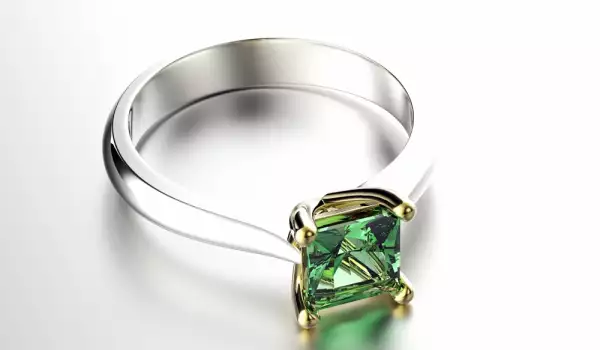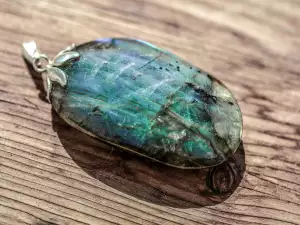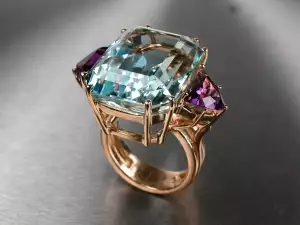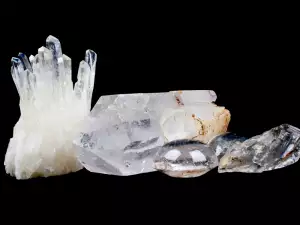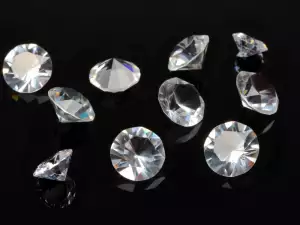Even in ancient times, people estimated the value of precious stones and divided them into two groups - precious and semi-precious. The gemstone group is also called the Big Four, because it is represented by 4 stones - Emerald, Ruby, Diamond and Sapphire.
Gemstones are the strongest and most durable stones on Earth. Among them, emeralds are also known as the green stones, because they are distinguished by a rich, beautiful green color. They are also called emeralds and this is their original name. Emerald entered as the name of the stone 5 centuries ago, which means that for much longer the stone was called only emerald. These natural creations have a long and mysterious history and properties that are good to know.
Emerald History
The oldest emeralds on Earth are 2.97 billion years old and we can safely say that they are as old as the world. People started mining them before the new era. The first to trade in emeralds were the Babylonians, as early as the 9th century BC. They were soon followed by the Egyptians. The first more accurate information comes precisely from Egypt from 1500 years before Christ. It is known that Cleopatra worshiped this stone and had jewelry made from it.
The first deposits of emeralds were right from Egypt, between the Nile and the Red Sea, and the deposit was named after the ruler who often visited it. In all the tombs of the pharaohs there were emeralds, since the stones were considered a symbol of immortality.
From the European people, the Spanish first discovered emerald stones in South America and traded them to the Old Continent and Asia, but the Incas appreciated and used them long before that. In North America there are deposits in the USA.
Today, emeralds are mined in the USA, Australia, Canada, South Africa, Madagascar, but the best quality are those that come from Colombia, which produce 90% of the total amount of emeralds on the market.
The name of the stone comes from the Greek smaragdos, which literally means green stone. The modern name for emerald dates from the 16th century.
Emerald description - main characteristics
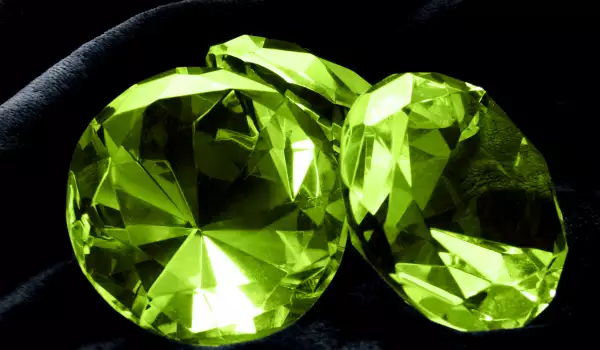
Emerald is a transparent variety of beryl, colored grass-green due to chromium oxide or vanadium oxide. Sometimes there is an admixture of iron oxide in them. Emerald has the same chemical composition as beryl, but contains more impurities of vanadium than chromium according to a 20th century study.
Their other qualities are resistance to acids and reagents, but at a temperature above 700°C they lose their color.
Emerald hardness and breakage
A natural emerald is rarely a flawless stone. On it there are cracks, breaks, a complex network of thin veins and cracked places. Characteristically, the stone is very fragile, its hardness is 7.5-8 on the Mohs scale, while the diamond is 10 and is the standard of a hard stone. Because of this, it is sensitive to compression and heating. A stone without visible cracks is considered flawless.
Emerald color
Since the emerald owes its fame mainly to its green color, this quality is divided into 3 components - tone, saturation and lightness.
Emeralds are found from yellow-green to blue-green in color, but the main tone is always green to dark green.
The color distribution in the stone is uneven. Usually one end is more brightly colored than the base. There are crystals with a change in color intensity along the length. With brightly colored stones, this dissonance in color is easily seen when the stone is rotated.
By this metric, the best emeralds are about 75% tone on a scale where 0% is colorless and 100% is opaque black. A quality stone should have a rich color with bright green shades.
Emerald transparency
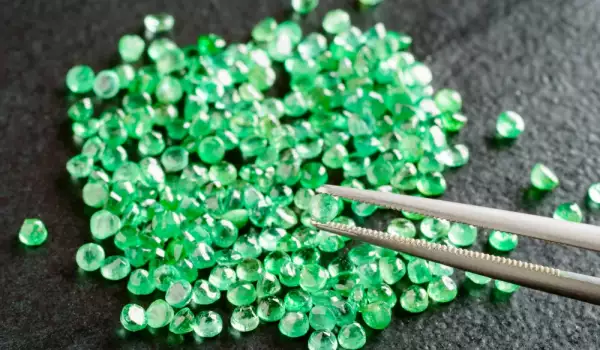
Only the highest quality emeralds are transparent. Usually the stones are cloudy, have healed cracks. Undamaged stones are rare, most have dots of other minerals trapped during growth. Pure emeralds surpass diamonds in value.
Artificial Emeralds
Most often, emeralds are small stones, but in modern conditions, artificially grown or synthetic stones are used. The main methods of producing artificial emeralds are flux and hydrothermal. For this purpose, the crystals are placed in an environment with a temperature of about 600°C and the atmospheric pressure reaches 1400 atmospheres.
Another option is to create a doublet stone from two small emeralds or an emerald and another mineral.
Emerald healing properties
Emerald supports the healthy heart function. It is used for recovery after infectious diseases, as well as in the treatment of the sinuses, lungs, heart, back and muscles. The green color has a soothing effect on the eyes and therefore the stone is beneficial for vision. Relieves rheumatism and diabetes.
Even Pliny writes that there is no other color like the emerald that is more pleasing to the eye. It soothes not only the eye, but also the nervous system, takes away the tension.
Lithotherapists use it as a barrier against insomnia, nightmares, irrational fears and fatigue.
This stone has antibacterial properties and if the stone is placed in a glass of water, it can be drunk without boiling or purifying. It is believed to reduce fever, heal inflammation, lower blood pressure, help treat psoriasis. It has a beneficial effect on the liver and stomach, bladder and urinary tract. It helps in the treatment of cough and tuberculosis, diabetes and burns. It supports the general health of the body and ensures longevity.
Magic properties of emerald

Emerald is a stone of patience, of inspiration, of successful relationships, because it harmonizes and supports family happiness and fidelity. It strengthens unconditional love and partnership. The vibrations of the stone resonate with the energy of hope and understanding.
Emerald is a stone of life force and movement and its energies harmonize and balance positive actions. It is a stone of courage, that urges one to move forward. It can enhance psychic abilities and unlock the channel of clairvoyance. It is a stone of wisdom, truth and clear communication.
A person wearing emerald jewelry is protected from evil forces and insured against misfortunes. The stone dissipates negative energy, cleans the aura and the home of its owner. It can enhance memory, soothe sleep and banish melancholy.
Emerald attracts wealth and brings peace and harmony to its owner. For nervous and sensitive people, it helps against stress. Improves memory and mental sharpness.
This stone successfully overcomes the bad sides in the character of its owner. It is still a gentle stone and does not tolerate aggression. Therefore, wearing emerald jewelry is recommended for people with a pure soul.
Magicians in India used the emerald to communicate with the astral world and gain information about the future. This stone helps to connect with the souls of the dead and is therefore a support for those who are inconsolably suffering for their lost loved ones.
The stone has a strong effect on the heart chakra, it also affects the chest, back and arms, it creates love between people.
As a talisman and amulet, it is suitable for mothers, sailors and travelers.
It gives creative people inspiration and peace of mind and for business people it brings success and luck. With these stones, scientific research and philosophical pursuits will have a more certain success.
It is a suitable stone for the signs of Taurus, Gemini and Aries.
Combination of emerald with other stones
The energy that emerald emits combines well with beryl, moldavite and other green or pink stones that heal the heart. Can be combined with Rose Quartz, Morganite, Dioptase, Rhodonite, Tourmaline, Rhodochrosite.
